 W
WCounterfeit money is currency produced without the legal sanction of the State or government, usually in a deliberate attempt to imitate that currency and so as to deceive its recipient. Producing or using counterfeit money is a form of fraud or forgery, and is illegal. The business of counterfeiting money is almost as old as money itself: plated copies have been found of Lydian coins, which are thought to be among the first Western coins. Before the introduction of paper money, the most prevalent method of counterfeiting involved mixing base metals with pure gold or silver. Another form of counterfeiting is the production of documents by legitimate printers in response to fraudulent instructions. During World War II, the Nazis forged British pounds and American dollars. Today some of the finest counterfeit banknotes are called Superdollars because of their high quality and imitation of the real US dollar. There has been significant counterfeiting of Euro banknotes and coins since the launch of the currency in 2002, but considerably less than that of the US dollar.
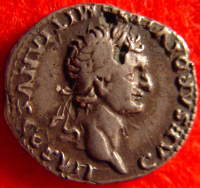 W
WCoin counterfeiting of valuable antique coins is common; modern high-value coins are also counterfeited and circulated. Counterfeit antique coins are generally made to a very high standard so that they can deceive experts. This is not easy and many coins still stand out.
 W
WCounterfeiting of the currency of the United States is widely attempted. According to the United States Department of Treasury, an estimated $70 million in counterfeit bills are in circulation, or approximately 1 note in counterfeits for every 10,000 in genuine currency, with an upper bound of $200 million counterfeit, or 1 counterfeit per 4,000 genuine notes. However, these numbers are based on annual seizure rates on counterfeiting, and the actual stock of counterfeit money is uncertain because some counterfeit notes successfully circulate for a few transactions.
 W
WThe Counterfeiting Coin Act 1741 was an Act of the Parliament of Great Britain which made it high treason to counterfeit silver, copper or brass coins, where previously the crime of counterfeiting such coins had been a misdemeanor. Its long title was An act for the more effectual preventing the counterfeiting of the current coin of this kingdom, and the uttering or paying of false or counterfeit coin. It has since been repealed.
 W
WThe EURion constellation is a pattern of symbols incorporated into a number of secure documents such as banknotes and ownership title certificates designs worldwide since about 1996. It is added to help imaging software detect the presence of such a document in a digital image. Such software can then block the user from reproducing banknotes to prevent counterfeiting using colour photocopiers. According to research from 2004, the EURion constellation is used for colour photocopiers but probably not used in computer software. It has been reported that Adobe Photoshop will not allow editing of an image of a banknote, but in some versions this is believed to be due to a different, unknown digital watermark rather than the EURion constellation.
 W
WA fourrée is a coin, most often a counterfeit, that is made from a base metal core that has been plated with a precious metal to look like its solid metal counterpart. The term is normally applied to ancient silver-plated coins such as the Roman denarius and Greek drachma, but the term is also applied to other plated coins.
 W
WA fractional currency shield is a 20 in × 25 in printed "shield" on which is placed 39 different fractional currency notes. Produced in 1866 and 1867 by the Treasury Department, the shields were sold to banks for $4.50 each, for the purpose of having a genuine note available to use as a method of counterfeit detection. The 39 notes were printed from the original plates on one side only, the other side left blank, or with the printed word "specimen".
 W
WThe Franc affair was a plot by Hungarian nationalists to forge French bank notes. In the aftermath of World War I, Hungary lost a large part of its territory and population in a series of treaties its people considered unjust. This led many Hungarians to turn towards nationalism and revanchism. In 1922, Prince Lajos Windischgraetz was approached by Gyula Mészáros who presented him with a plan to counterfeit the French franc. Windischgraetz sought to damage the French economy while simultaneously raising funds for an internal coup in Hungary and irredentist activities. The plan came to halt when the notes produced by Mészáros were judged to be too primitive. In the summer of 1923, Windischgraetz met with German nationalist and retired Prussian Army General Erich Ludendorff who prompted him to utilize the forging equipment left from a similar unrealized German conspiracy.
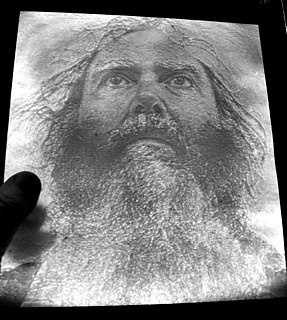 W
WA light-and-shade watermark, is a watermark image produced in a chiaroscuro style. In a traditional watermark, an image is produced in paper fibers by contrasting shades of light and dark in places where the paper is made thinner or thicker during the printing process. The resulting image has a high-contrast "black and white" quality with no graduated shading in between. In a chiaroscuro watermark, however, the fibers in the paper run from thin to thick, producing an image with many shades from light to dark. The technique was first developed in 1848 by William Henry Smith as a method to help prevent counterfeiting.
 W
WA Machine Identification Code (MIC), also known as printer steganography, yellow dots, tracking dots or secret dots, is a digital watermark which certain color laser printers and copiers leave on every single printed page, allowing identification of the device with which a document was printed and giving clues to the originator. Developed by Xerox and Canon in the mid-1980s, its existence became public only in 2004. In 2018, scientists developed privacy software to anonymize prints in order to support whistleblowers publishing their work.
 W
WMicroholograms are a technology for moving holographic protection to the level of primary material (substrate).
 W
WMicroprinting is the production of recognizable patterns or characters in a printed medium at a scale that requires magnification to read with the naked eye. To the unaided eye, the text may appear as a solid line. Attempts to reproduce by methods of photocopy, image scanning, or pantograph typically translate as a dotted or solid line, unless the reproduction method can identify and recreate patterns to such scale. Microprint is predominantly used as an anti-counterfeiting technique, due to its inability to be easily reproduced by widespread digital methods.
 W
WOperation Bernhard was an exercise by Nazi Germany to forge British bank notes. The initial plan was to drop the notes over Britain to bring about a collapse of the British economy during the Second World War. The first phase was run from early 1940 by the Sicherheitsdienst (SD) under the title Unternehmen Andreas. The unit successfully duplicated the rag paper used by the British, produced near-identical engraving blocks and deduced the algorithm used to create the alpha-numeric serial code on each note. The unit closed in early 1942 after its head, Alfred Naujocks, fell out of favour with his superior officer, Reinhard Heydrich.
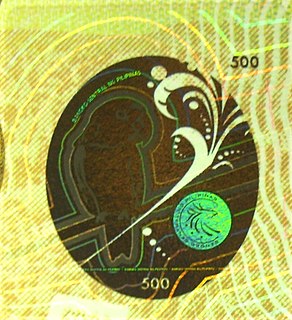 W
WAn optical variable device or optically variable device (OVD) is an iridescent or non-iridescent security feature that exhibits different information, such as movement or colour changes, depending on the viewing and/or lighting conditions. The particular changes of appearance when rotating and tilting are reversible, predictable and reproducible. OVDs cannot be photocopied or scanned, nor can they be accurately replicated or reproduced. OVDs are often used as security devices and anti-counterfeiting measures on banknotes, government-issued identification documents, or credit cards. OVDs can be created through a combination of printing and embossing.
 W
WOptically variable ink (OVI) also called color shifting ink is an anti-counterfeiting measure used on many major modern banknotes, as well as on other official documents.
 W
WPaisa is a 2014 Indian Telugu-language action drama film directed by Krishna Vamsi, produced by Ramesh Puppala under Yellow Flowers banner, featuring Nani and Catherine Tresa in the lead. It was written by Padmasri, K. K. Binojee and Patrikeya. It deals with the power of money and how the whole world revolves around it. The film was scheduled to release on 20 December 2013 with an 'A' certificate from censor board for its excessive violence. However, the film released worldwide on 7 February 2014. Upon release, the film received mixed reviews from critics but turned out to be a hit at the box office. The film was remade in Bangladeshi film as Black Money in (2015) starring Symon Sadik and Moushumi Hamid.
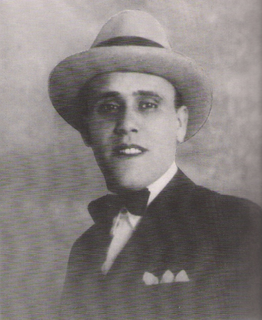 W
WArtur Virgílio Alves Reis was a Portuguese criminal who perpetrated one of the largest frauds in history, against the Bank of Portugal in 1925, often called the Portuguese Bank Note Crisis.
 W
WSecurity printing is the field of the printing industry that deals with the printing of items such as banknotes, cheques, passports, tamper-evident labels, security tapes, product authentication, stock certificates, postage stamps and identity cards. The main goal of security printing is to prevent forgery, tampering, or counterfeiting. More recently many of the techniques used to protect these high-value documents have become more available to commercial printers, whether they are using the more traditional offset and flexographic presses or the newer digital platforms. Businesses are protecting their lesser-value documents such as transcripts, coupons and prescription pads by incorporating some of the features listed below to ensure that they cannot be forged or that alteration of the data cannot occur undetected.
 W
WA security thread is a security feature of many banknotes to protect against counterfeiting, consisting of a thin ribbon that is threaded through the note's paper.
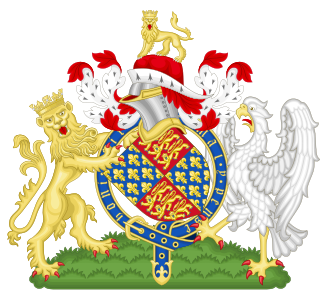 W
WThe Treason Act 1351 is an Act of the Parliament of England which codified and curtailed the common law offence of treason. No new offences were created by the statute. It is one of the earliest English statutes still in force, although it has been very significantly amended. It was extended to Ireland in 1495 and to Scotland in 1708. The Act was passed at Westminster in the Hilary term of 1351, in the 25th year of the reign of Edward III and was entitled "A Declaration which Offences shall be adjudged Treason". It was passed to clarify precisely what was treason, as the definition under common law had been expanded rapidly by the courts until its scope was controversially wide. The Act was last used to prosecute William Joyce in 1945 for collaborating with Germany in World War II.
 W
WThe United States Secret Service is a federal law enforcement agency under the Department of Homeland Security charged with conducting criminal investigations and protecting U.S. political leaders, their families, and visiting heads of state or government. Until 2003, the Secret Service was part of the Department of the Treasury, as the agency was founded in 1865 to combat the then-widespread counterfeiting of U.S. currency.
 W
WA watermark is an identifying image or pattern in paper that appears as various shades of lightness/darkness when viewed by transmitted light, caused by thickness or density variations in the paper. Watermarks have been used on postage stamps, currency, and other government documents to discourage counterfeiting. There are two main ways of producing watermarks in paper; the dandy roll process, and the more complex cylinder mould process.